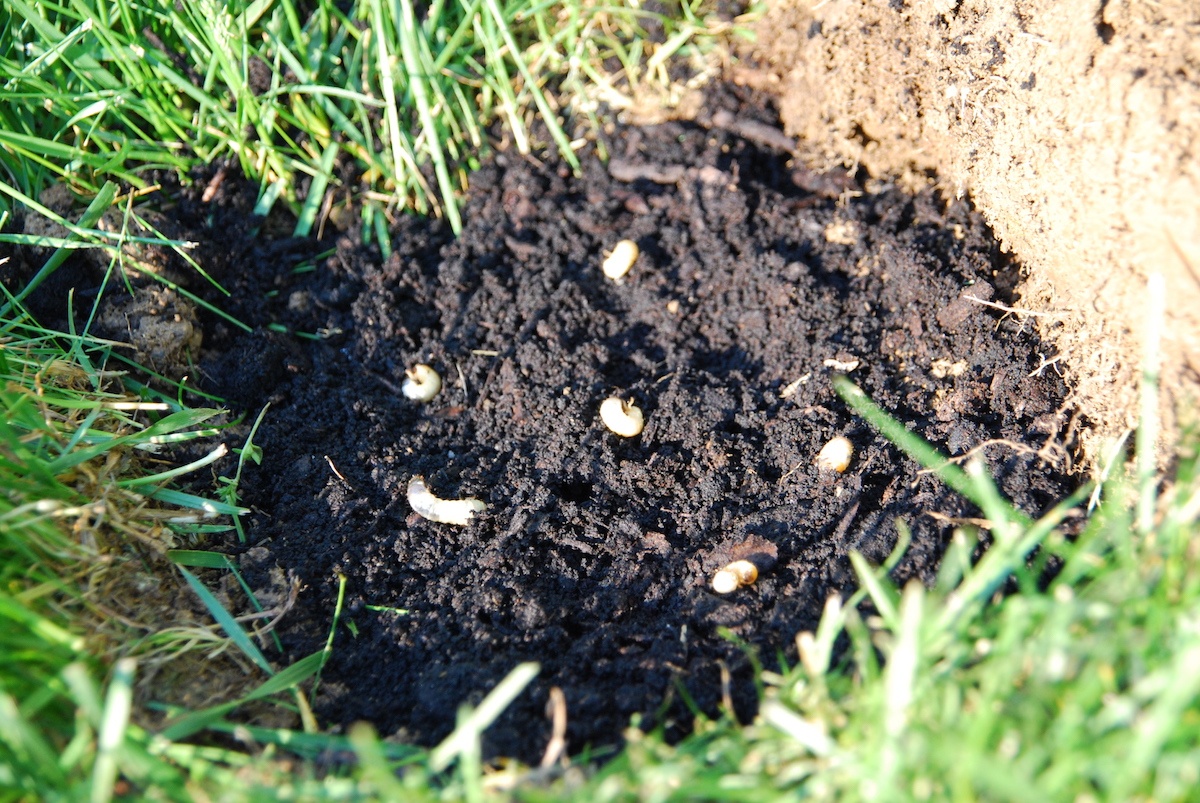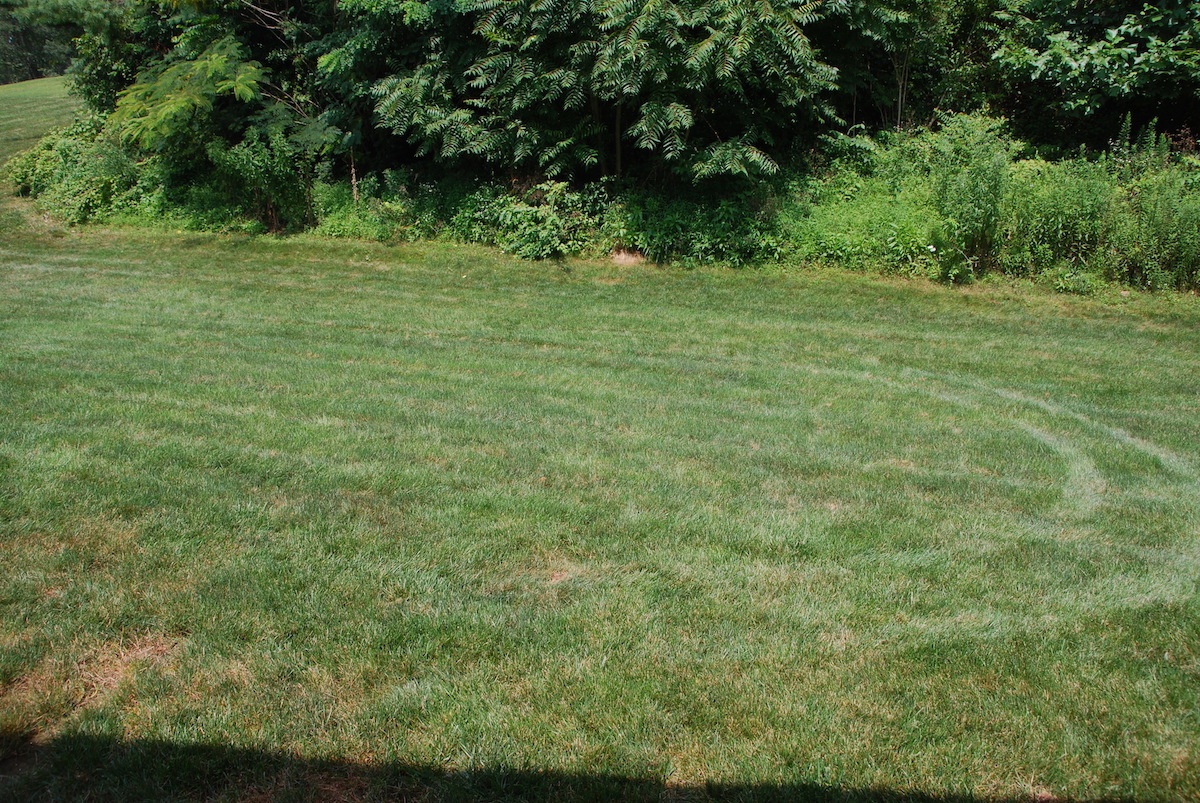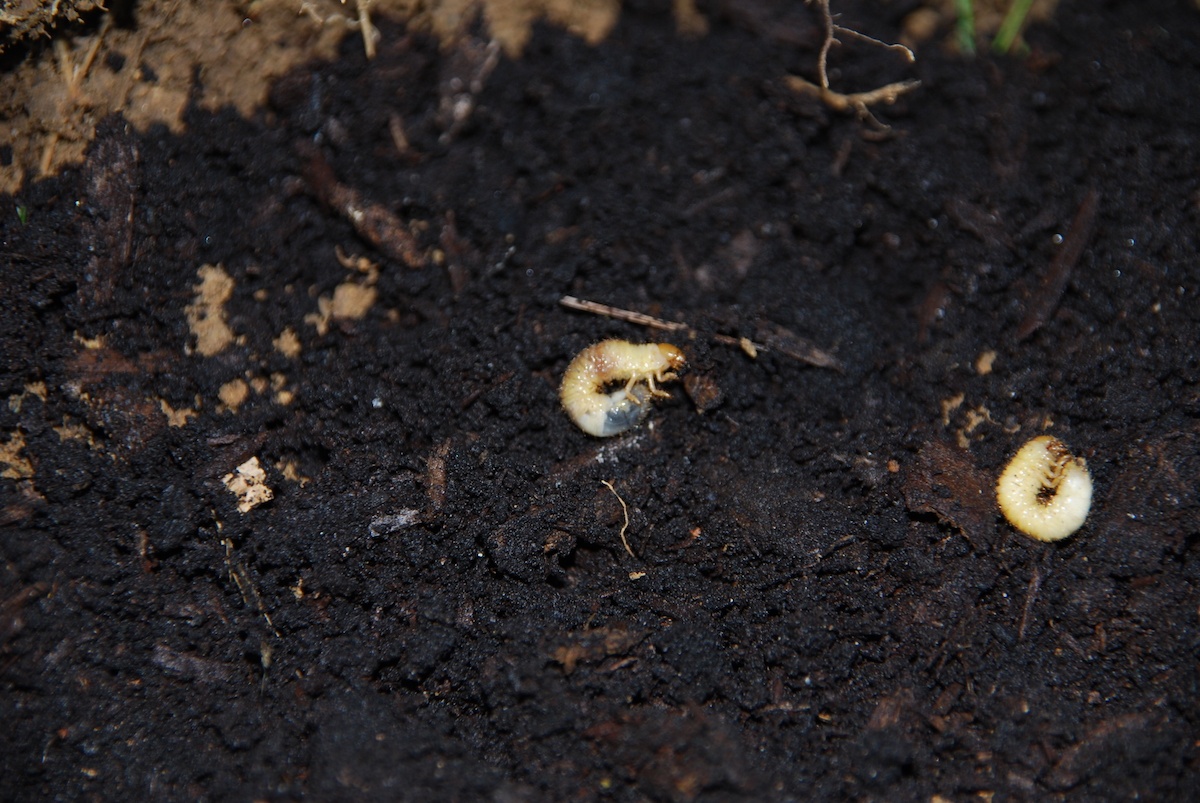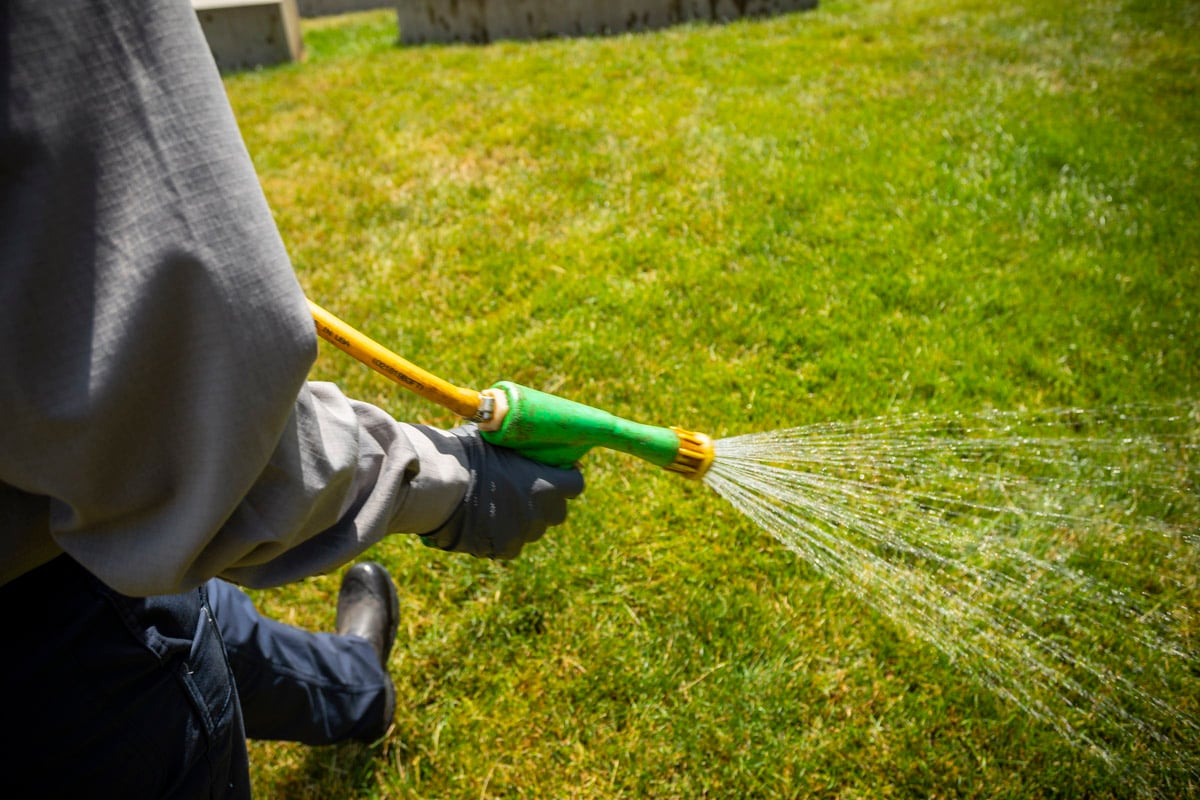Some lawn problems are obvious and easily diagnosed. Crabgrass crowding out your healthy grass or other weeds creeping into the lawn is a noticeable frustration. But sometimes a lawn problem is a bit more stealthy. It might be happening right under your nose without you even knowing.
Lawn grubs are one of these sneaky problems.
Grubs, which is the collective name for several species of beetles in the larval stage, are tiny creatures that have the power to do a lot of damage to your lawn. The biggest trouble with lawn grubs is that they may be munching your grassroots, causing damage beneath the surface, where you won’t easily notice them.
That’s why it’s important to pay attention to signs of lawn grubs.
Most of the time homeowners notice these signs before ever seeing an actual grub. Educating yourself on what to look for will help stop a problem before it gets too serious.
Signs of Lawn Grubs
Here are some signs of grubs in your lawn as well as what to do about them.
1. Grass Pulling Up
One of the most telltale signs of lawn grubs is when the grass is pulling up. This occurs because lawn grubs eat the roots of your lawn (rather than the grass blades, as surface-feeding insects do). Once they’ve destroyed your lawn’s roots, it can pull up easily. In some worst-case scenarios, the lawn might even be able to “roll up” like a carpet in certain sections where grubs have been feeding.

2. Grass Turning Brown
Another sign of lawn grubs is also the grass turning brown, particularly if it’s happening in certain areas or patches. These could be spots where grubs have been feasting on the lawn’s roots, causing it to die in that area.

Of course, brown spots on the lawn can have other causes as well. Lawns suffering from drought damage, surface insect damage, or lawn diseases can also turn brown. But if the grass is pulling up and also turning brown, it’s quite likely it’s related to grub damage.
3. An Increase in Animal Activity
If you notice a sudden increase in animal activity on your lawn such as a large number of birds or moles hanging around, it could be a possible sign of lawn grubs. Lawn grubs are a common food source for many of these animals. In fact, if you start to notice mole damage (such as tunneling or a dug-up lawn), it could be that these pests are in search of lawn grubs.
What to Do About Grubs in Your Lawn
First and foremost, you want to make sure that it is most definitely grubs that you are dealing with. As we’ve mentioned above, other lawn problems can cause your lawn to decline in health, too.
If you suspect that you might have a grub problem, you can get down on your lawn and pull apart the grass to search for grubs at the surface. They are large enough to spot and look like c-shaped white creatures.

As far as how to get rid of grubs in your lawn, there are curative products that will take care of them. But you’ll be in even better shape if you’re able to prevent grubs in the first place with preventative products.
Grubs can cause damage that is expensive to repair if not caught early. The grass that has died in areas will need to be regrown.
But preventative products work by taking care of young grubs as they hatch. Preventative grub control lasts all season but the application timing is important.

At Joshua Tree, we typically try to get preventative products down by mid-July. If it gets too late (around August) the product will not be effective on older grubs and we will need to switch to a curative product.
Curative products are a bit more costly than preventative products, hence the argument that prevention is the better and more cost-effective option whenever possible.
In some cases, there may already be damage that can’t be fixed which will have to be addressed accordingly, depending on its severity. If there are a lot of damaged patches of grass, we can seed in the fall to restore the lawn in those areas.
Working with a Professional to Get Rid of Grubs in Your Lawn
If you are reading this article because you either suspect or know that you have an existing grub problem, then you’ll want to connect with a lawn care pro to determine your best course of action. If it’s a serious problem, you’ll want to get a curative product down quickly before the grub damage is too severe.
You can also talk about preventative care in the future so that you won’t be stuck with frustrating damage.
At Joshua Tree, we like to see homeowners choose preventative control so that they don’t have to deal with future problems. We want you to get the most out of our grub control treatment. It’s something that is going to provide you a lot of value in terms of protecting your investment and it’s something that we strongly believe in.
That ultimately adds up to peace of mind.
You can rest assured your lawn is being taken care of the right way when Joshua Tree handles your grub control.
With the right care for your lawn, you’ll gain valuable peace of mind. If you’re interested in having your lawn inspected and its health assured, contact us for a free quote or give us a call at 833-JTE-TREE.



